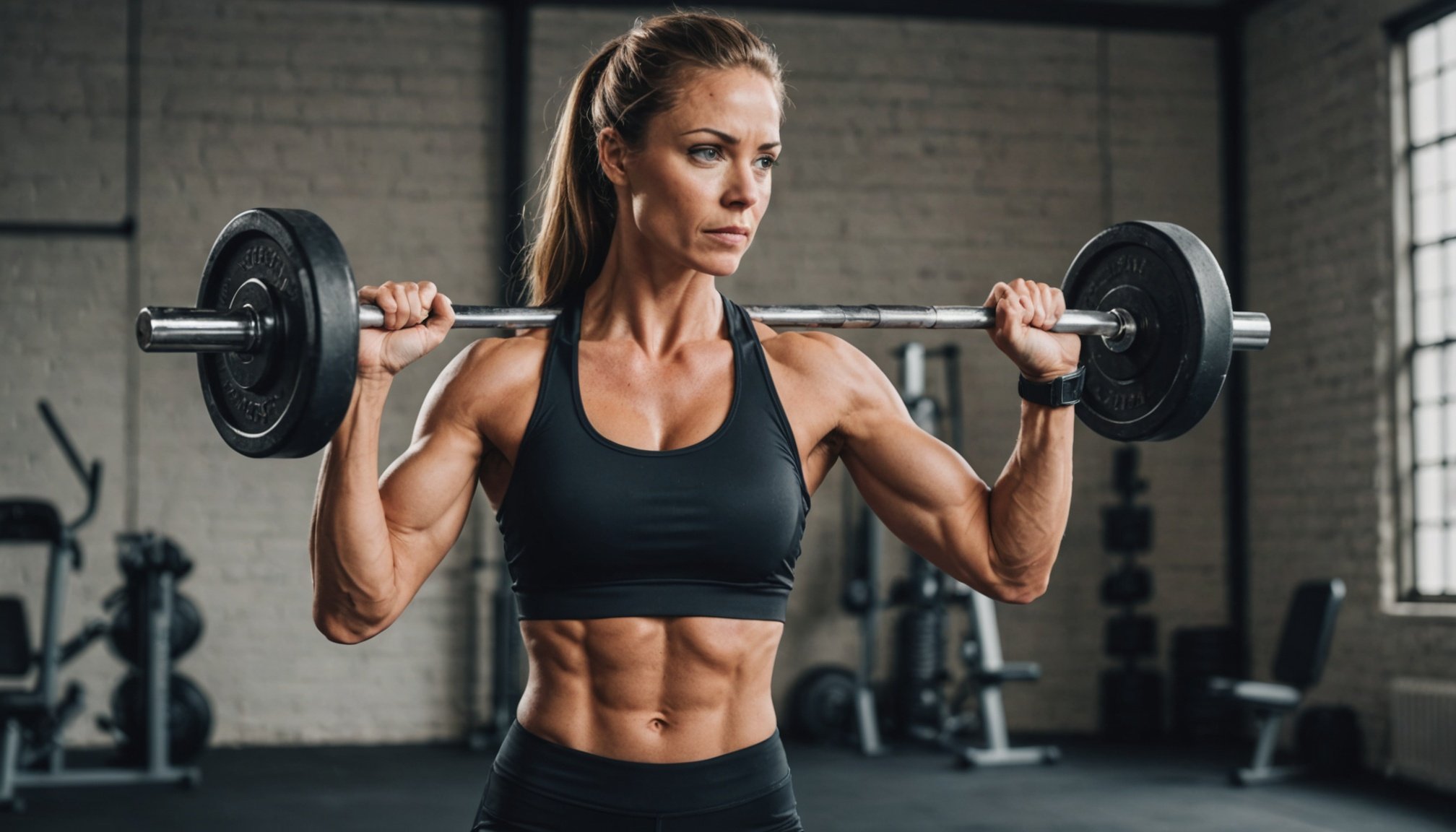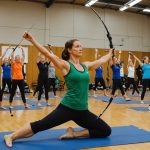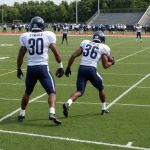Developing a balanced and efficient workout routine involves more than just deciding to hit the gym and choosing a few random exercises. You need to consider how the various muscles in your body work together and which ones should be trained together for the best results. Understanding this will help you maximize your workout efficiency and avoid overworking certain muscle groups. Let’s delve into the science behind the ideal pairings of muscle groups for optimal workouts.
Understanding the anatomy of muscle groups
Before we delve into which muscle groups to pair in your workouts, it’s important to understand how the muscles in your body work. Your body is made up of numerous muscle groups, each playing a key role in different body movements. Major muscle groups include the chest (pectoralis major and minor), back (latissimus dorsi, rhomboids, trapezius), shoulders (deltoids), arms (biceps, triceps), and legs (quadriceps, hamstrings, gluteals, calves).
Also to see : Can intermittent fasting impact your strength training performance?
When you perform a physical activity, such as lifting a dumbbell, multiple muscle groups work together to achieve the movement. The primary muscle doing the majority of the work is called the ‘agonist’, while the muscle that helps stabilize the movement is called the ‘synergist’. Understanding these roles can help you devise a workout program that promotes muscle balance and prevents muscle imbalances that could lead to injuries.
Pairing the chest and triceps
One of the most common muscle group pairings in strength training is the chest and triceps. The logic behind this pairing is the role these two muscle groups play during exercise. When you work on your chest exercises, such as the bench press or push-ups, your triceps act as synergist muscles, meaning they assist in the movement.
Additional reading : How does the consumption of collagen supplements post-workout aid in tendon repair?
By training the chest and triceps together in a single workout session, you can efficiently work these two muscle groups at the same time. This approach allows you to maximize your exercise time, as your triceps will be sufficiently warmed up and primed for work after your chest exercises.
Combining back and biceps
Just as the chest and triceps work together, so do the back and biceps. During back exercises, such as rows or pull-ups, your biceps act as synergist muscles. They assist in the pulling motion, and as a result, they get a good workout in the process.
Training your back and biceps together lets you get the most out of your workout session. Your biceps will be warmed up and ready to work harder after you’ve completed your back exercises. This approach can help you build balance between your muscle groups and enhance your overall strength and physique.
Working on shoulders and legs
You might be wondering why shoulders and legs are being grouped together. Although they don’t directly work together like the chest and triceps or back and biceps, training them together can give you a balanced workout.
The reason behind this pairing is that shoulder and leg exercises are generally quite taxing on your body. By training them together, you can ensure that you’re giving these large muscle groups the attention they need without overexerting yourself. Shoulder exercises like shoulder presses and leg exercises like squats or lunges can be combined in a single workout for a comprehensive, full-body strength training routine.
Balancing rest and work days
An essential component of an effective workout split is ensuring that each muscle group has enough rest time to recover and grow. By grouping muscle groups that work together and scheduling rest days between these workouts, you can promote muscle growth and prevent overtraining.
For instance, you could train your chest and triceps on day one, rest on day two, work your back and biceps on day three, rest again on day four, and then train your shoulders and legs on day five. This type of split ensures that each muscle group has ample rest time before it’s worked again.
In conclusion, understanding the dynamics of muscle groups and how they work together can significantly enhance your workout efficiency. Pairing the right muscle groups together not only maximizes your training time but also promotes balanced muscle growth and helps prevent injuries. Always remember, the quality of workout matters more than the quantity, and a well-planned workout split can be a great tool in achieving your fitness goals.
Implementing the ‘Push-Pull’ Training Split
The ‘Push-Pull’ training split is another effective approach to pair muscle groups for optimal workouts. This strategy organizes your workout routine based on the movement patterns, dividing them into two categories: push and pull. The concept is simple: on push days, you work the muscles involved in pushing movements, namely the chest, shoulders, and triceps. On pull days, you target the muscles engaged in pulling movements, which include the back and biceps.
The push-pull method allows you to work multiple muscle groups in one session, which translates to more efficient workouts. Additionally, this technique also encourages balanced muscle development as it ensures each muscle group is trained equally. For example, on a push day, you might perform bench presses, shoulder presses, and tricep dips. These exercises target the chest, shoulders, and triceps – all ‘push’ muscles. On a pull day, you might incorporate exercises like pull-ups, rows, and bicep curls, which primarily engage your back and biceps, the ‘pull’ muscles.
One of the biggest advantages of this training split is that it reduces the risk of overtraining. Since you’re alternating between push and pull movements, your muscles have ample time to rest and recover before their next workout. This contributes to improved performance, muscle growth, and reduced risk of injuries. However, it’s essential to bear in mind that this method requires a balanced approach. You must ensure you’re not favoring one type of movement or muscle group over the other to maintain muscle balance.
The Importance of Individualizing Your Workout Routine
While it’s beneficial to understand the science behind pairing muscle groups for optimal workouts, it’s equally important to remember that everyone’s body is unique. Factors such as your fitness level, goals, and personal preferences can influence which muscle groups you should pair together. Therefore, personalizing your workout routine based on these factors can yield the best results.
For instance, if you’re a beginner, you might benefit more from full-body workouts that engage all major muscle groups in one session. You may choose to focus on compound movements like squats, deadlifts, and bench presses that work multiple muscle groups simultaneously. On the other hand, if you’re an advanced lifter, you might prefer a bro split, where you dedicate each workout to a specific muscle group. This allows for more targeted training and higher volume per muscle group, which can be effective for muscle growth.
Also, your fitness goals should guide your workout routine. If your aim is to build overall strength, pairing larger muscle groups like the chest and back with their corresponding smaller muscle groups, such as the triceps and biceps, could be beneficial. If you’re focusing on enhancing muscular endurance, pairing upper and lower body exercises in a circuit-style workout could be effective.
In Conclusion
Creating an optimal workout routine involves understanding how muscle groups work together, applying scientifically-proven principles such as the push-pull method, and individualizing your routine based on your personal needs and goals. By carefully choosing which muscle groups to pair together, you can maximize your workout efficiency, promote balanced muscle development, and reduce the risk of overtraining. Above all, remember that consistency is key. It’s better to stick with a workout routine that suits your lifestyle and preferences than to aim for perfection and risk burnout. After all, the best workout is the one that you enjoy and can sustain in the long run.











